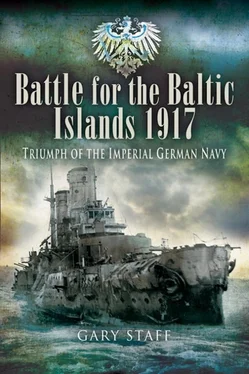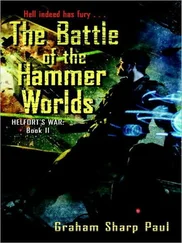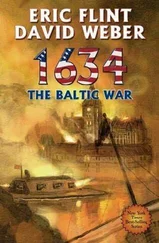On November 3rd the ‘Special Unit’ was dissolved. I am grateful for the undertaking against the Baltic Islands and now hand over command and retire as ‘Chief of the Special Unit’.
Full recognition and thanks to the leaders and men!
Honour and glory to those who lost their lives! They are with God our all merciful Warlord and our beloved Fatherland.
In the meantime, a ‘Government of the Baltic Islands’ was formed, with its seat in Arensburg. Many of the local inhabitants were descended from Germanic people and were not troubled by the appearance of the German army and navy. The first governor was Generalleutnant Freiherr von Seckendorff, who was conveyed from Libau to Arensburg aboard SMS Strassburg on 31 October.
General von Kathen and his staff departed Arensburg aboard Strassburg the following day. On 3 November, Generalleutnant von Estorff and the staff of the 42nd Infantry Division and 131 Regt followed on two transport steamers, whilst the remainder of the division, 17 Regt, departed on the following day. On 7 November, the last part of the II Transport Section, the steamers Batavia and Chemnitz , went to Arensburg, where they finished unloading and departed for Libau on 10 November. At the same time the minesweeping work continued incessantly.
After the conclusion of Operation Albion the chance of a clash with the Russian fleet appeared more remote than ever. Although the Naval Forces of the Riga Gulf had fought determinedly and resolutely, the higher Russian command remained reluctant to commit their heavier forces to a confrontation. Both Admirals Bakhirev and Razvozov had committed themselves to action with the German forces, which was characteristic of officers who were veterans of the Russo-Japanese War, but their warlike resolve was not supported by the Russian high command. Once again political ineptitude had overstepped strategic good sense.
All the German hopes and desires for a successful operation to capture the Baltic Islands had come to fruition. However, a further revolution in Russia served to muddy the waters. On 7/8 November the so-called ‘October Revolution’ (it was still October according to the old Gregorian calendar) began and Lenin’s Bolsheviks seized the Winter Palace in St Petersburg, or Petrograd as it was renamed, and formed a new revolutionary government. A civil war soon broke out across Russia between the ‘Red’ communists and the ‘White’ monarchists. Nevertheless, the Bolsheviks immediately took steps to get Russia out of the war. On 5 December 1917 a preliminary suspension of hostilities between the Central Powers and Russia was announced and on 22 December armistice discussions began in the town of Brest-Litovsk. Some of the terms were concerned with the rights of Poland and the independence of the Baltic States. Just as in 1856, the question of Finland’s autonomy and the independence of the smaller states became a sticking point in negotiations, but, nevertheless, vast quantities of German men and materiel were released to participate in the great offensive on the western front in March 1918.
Captain 2nd Rank Kosinski wrote:
The Moon Sound operation was successfully concluded by the Germans, and this had enormous significance for the further course of the war. The flank of our land army had been turned and was naked, and of necessity what they had to think about was not holding the enemy, but about their own rescue, with the possible occupation of Reval by the enemy, in our rear. The result of our being forced from Moon Sound was our further retreat and the possible abandonment of Reval.
Indeed. But not only was the gateway to Reval open, but also the gateway to the remainder of the Finnish Gulf, including Helsingfors and St Petersburg. At the beginning of February 1918 the Finnish minister Svinhufvud and his Government requested assistance from the German Government in their fight against the communist ‘Reds’, who were dominating the country. The German High Sea Fleet once again detached a ‘Special Unit’ of battleships which successfully landed troops on Aland Island, Hango and finally Helsingfors, the Finnish capital. In this way the Finnish Government was restored, the ‘Reds’ were crushed, and Finland was liberated and finally gained independence from Russia. Without control of the Baltic Islands this operation would not have been possible. Then, in late 1918, the Allies landed troops at Murmansk, in northern Russia, and began marching on St Petersburg. The German response was to again form a ‘Special Unit’ in August, which embarked troops and stood ready in Kiel. The bold objective of this force was the occupation of St Petersburg. All was in readiness to begin the operation and German small cruisers were already conducting reconnaissance deep inside the Finnish Gulf near Kronstadt. However, the deteriorating war situation did not allow this operation to be carried out; the troops were disembarked, and the battleships returned to the North Sea. Likewise, this planned operation was only conceivable because of the capture of the Baltic Islands.
Operation Albion, the conquest of the Baltic Islands, had been an unqualified success. The predictions of Grossadmiral Prinz Heinrich had come true and every objective had been achieved and even surpassed. Not only had it been a tactical and strategic success, perhaps greatly influencing the Russian desire to continue the war, but Operation Albion and subsequent operations in Finland proved that the High Sea Fleet and Imperial Navy were not only successful fighting units, but also a decisive political instrument, able to influence the future of nations and the war in accordance with the Government’s political objectives.
The Imperial Navies, both Russian and German, could indeed be proud of their respective achievements, but these came at a cost. German losses were seven minesweepers, nine trawlers and smaller boats, and one torpedoboat. The German Imperial Navy lost a total of 156 dead and 60 wounded, whilst the Army lost 54 dead and 141 wounded. The Russians and Allies lost the battleship Slava and destroyer Grom , the British submarine C32, and numerous steamers. There were 20,130 Russian prisoners and they surrendered 141 guns and 130 machine guns. Whilst cooperation between the Russian Army and Navy had been almost non existent, the Germans could be very satisfied with the cooperation between their Imperial Navy and Army, which stood them in good stead for subsequent operations. The battle for the Baltic Islands represented a particularly high point in the history of the Kaiserliche Marine.
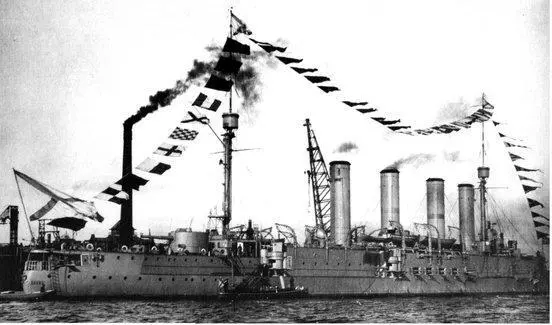
Vice Admiral Bakhirev’s flagship of the Naval Forces of the Riga Gulf was the armoured cruiser Bayan .
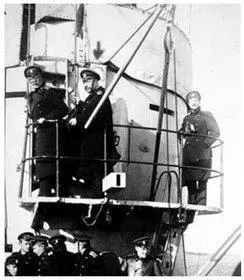
Vice Admiral M. K. Bakhirev (marked by the arrow) on the bridge of a battleship earlier in the war.
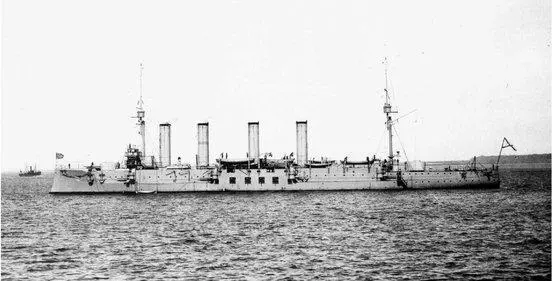
The armoured cruiser Admiral Makarov arrived to bolster the Russian defences on 14 October 1917.
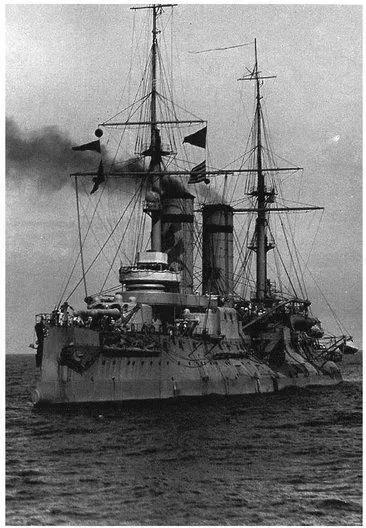
The prototype of the Russian Borodino -class battleships was the French-built Tsarevitch , whose name was changed to Graschdanin ( Citizen ) after the first revolution.
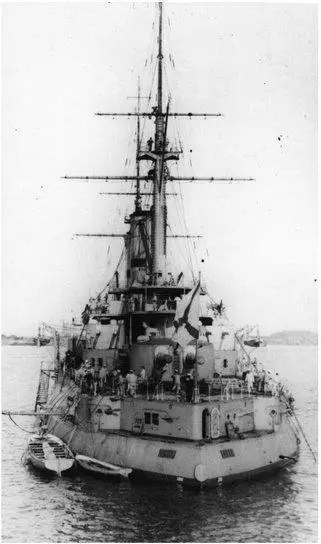
Slava , the last ship of the Borodino class, seen from astern.
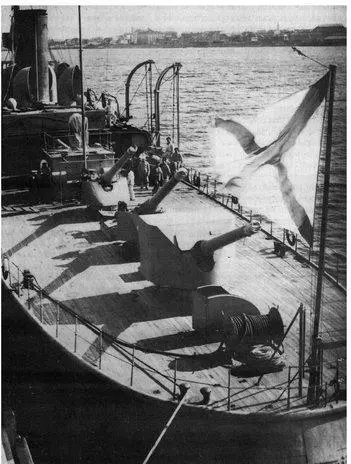
This fine stern view of the gunboat Grozyashchi shows three of her four 6-inch guns.
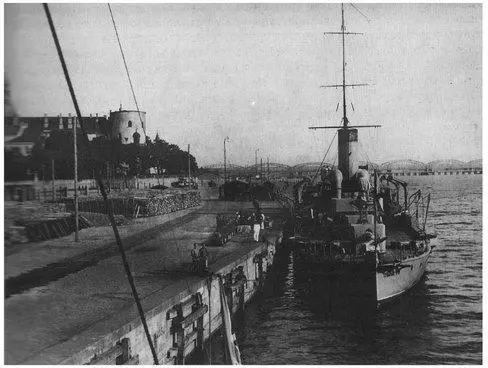
The gunboat Chrabry at Riga.
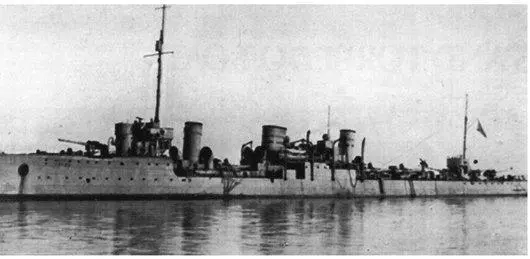
The Russian destroyer Grom . The V100 and other large German torpedoboats were direct copies of these large Russian boats.
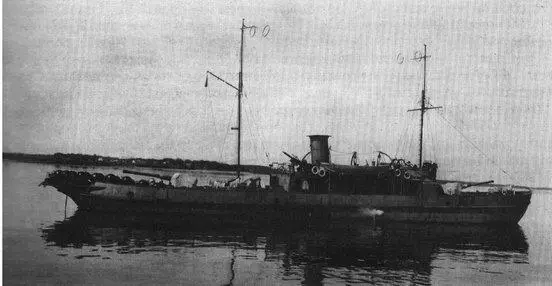
The shallow-draught mine layer Pripyat .
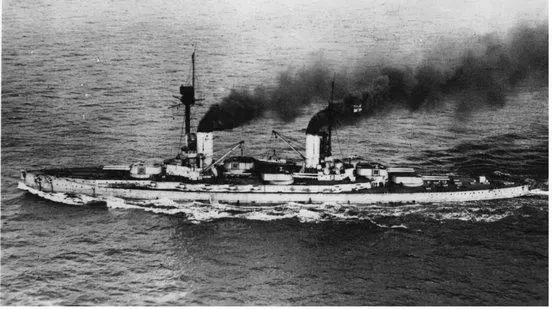
SMS Kaiser .
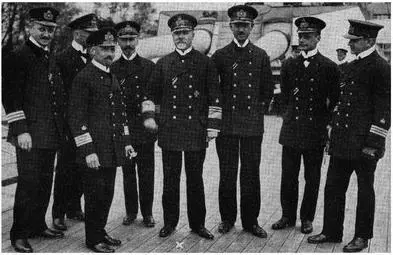
Vizeadmiral Ehrhard Schmidt (centre, marked with an ‘x’) and his Staff aboard his flagship, Moltke .
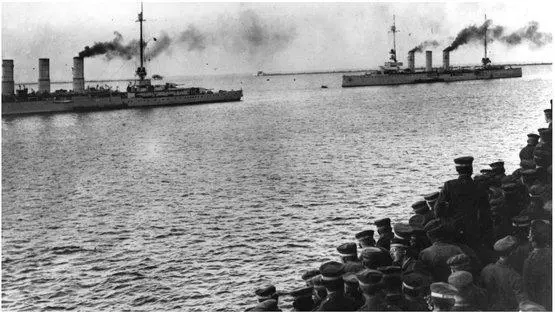
The small cruisers Frankfurt and Augsburg in Libau prior to the beginning of the operation.
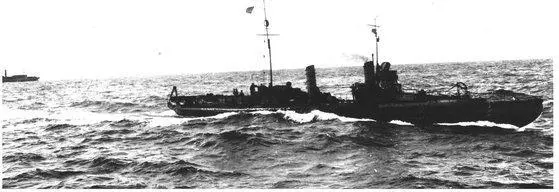
A minesweeper of II Minesweeper Flotilla. In the background the aircraft tender SMH Santa Elana .
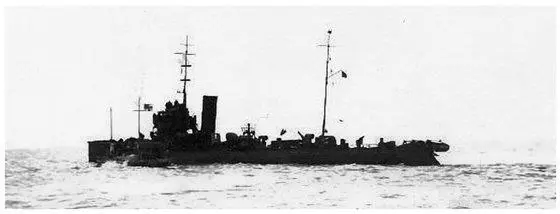
A German A-type torpedoboat, used by the minesweeper flottillas.
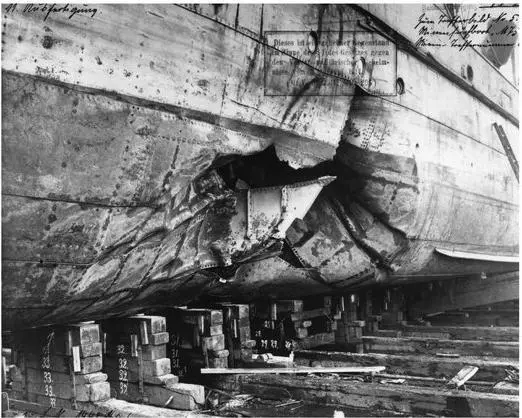
A view of the damage caused when the minesweeper M75 struck a mine on 8 October, during preparatory mine sweeping for Operation Albion.
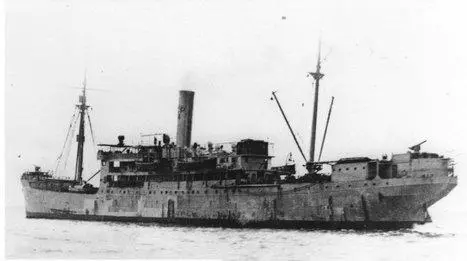
The sperrbrecher (barrier breaker) Rio Pardo .
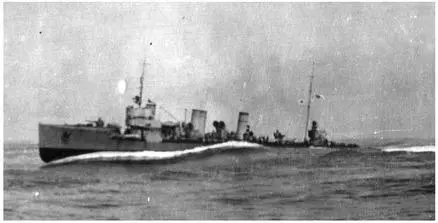
The German torpedoboat V100.
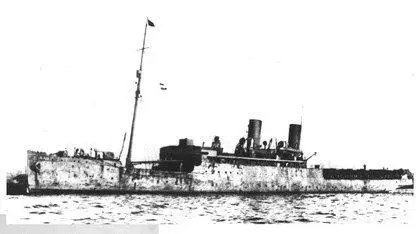
The German net layer Eskimo , which began the war as an English merchant ship.

The minelayer Nautilus transfers mines to small minesweeper motorboats for laying in shallow waters.
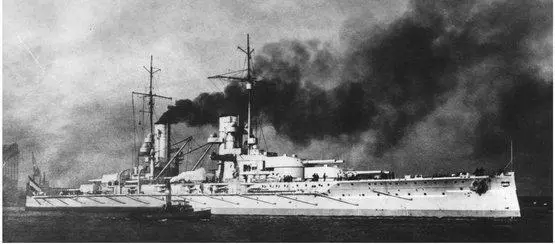
The German battleship Grosser Kurfürst , just after completion in 1914.
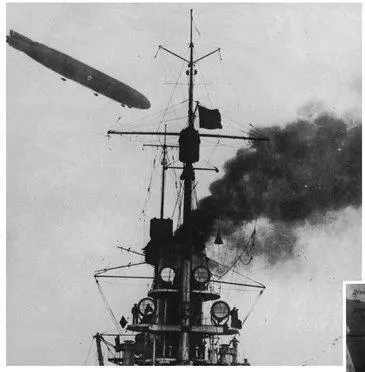
The airship SL8 passes over Grosser Kurfürst . Operation Albion really was an all-arms affair; airships were used for long-range strategic bombing and reconnaissance; aircraft were used for bombing and reconnaissance; U-boats were used for mine laying, and the battleships, cruisers and torpedoboats used their guns to support the Army ashore and to do battle with the Russian naval forces.
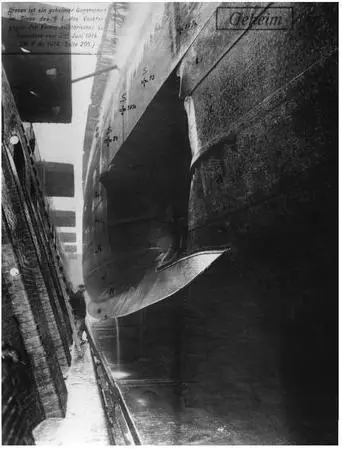
A view of the damage caused when Grosser Kurfürst struck a mine at 0509hrs on 12 October.
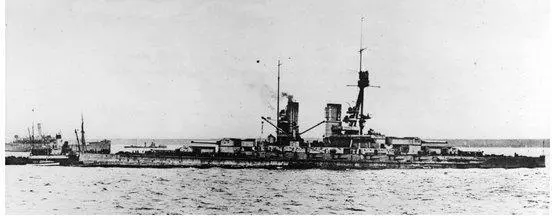
SMS Bayern in Tagga Bay after suffering damage from a mine. The bows have sunk by approximately 1 metre. In the background, Rio Pardo and a torpedoboat.
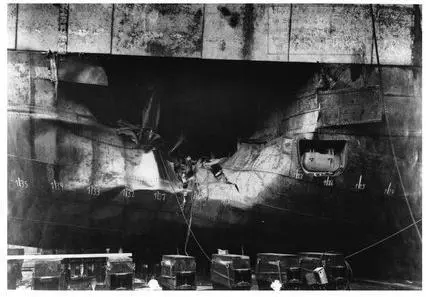
The damage caused to Bayern by the Russian mine struck at 0507 on 12 October. The blast destroyed the forward broadside torpedo room.
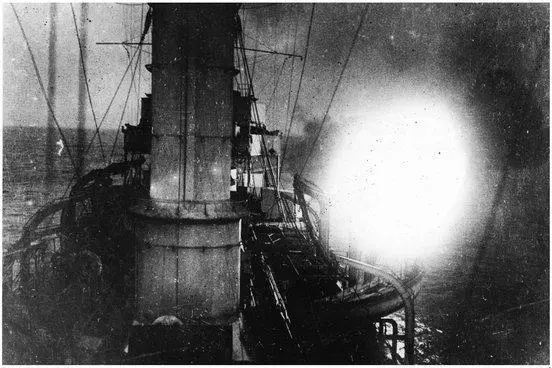
The small cruiser SMS Emden II opens fire on the Russian battery at Cape Toffri on Dagö Island.
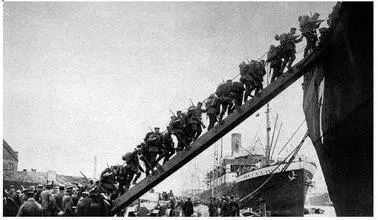
German troops board a transport steamer.
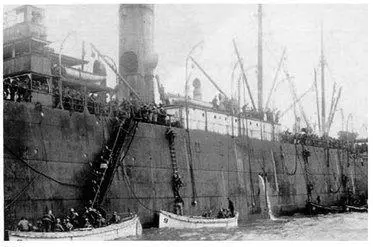
Troops disembarking from a transport steamer into boats for the landing in Tagga Bay.

A close-up of the troops ready to go ashore.
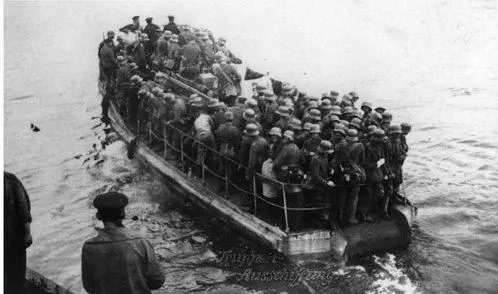
German minesweeping motor launches were pressed into service to take troops ashore.
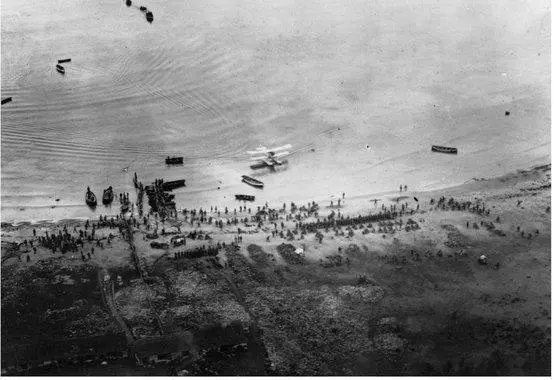
The scene at the disembarkation beach in Tagga Bay. A Friedrichshafen FF33 floatplane has pulled up at the beach.

German ships in Tagga Bay. The battleship Bayern is on the right, Vizeadmiral Schmidt’s flagship, SMS Moltke , in the centre and the battleships Prinzregent Luitpold and Markgraf are further to the left.
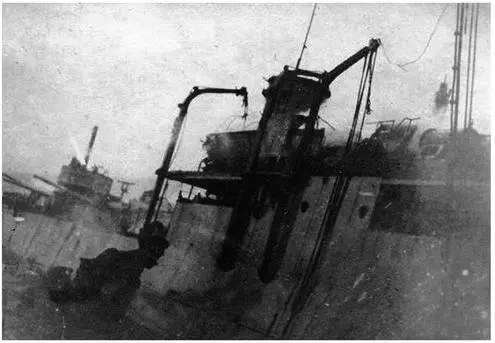
The German torpedoboat B98 comes alongside the stricken Grom , which had to be abandoned after she was hit by the battleship Kaiser and torpedoboot V100.

The battleship König follows minesweepers and sperrbrecher vessels through the mine fields of the Irben Straits on 16 October.
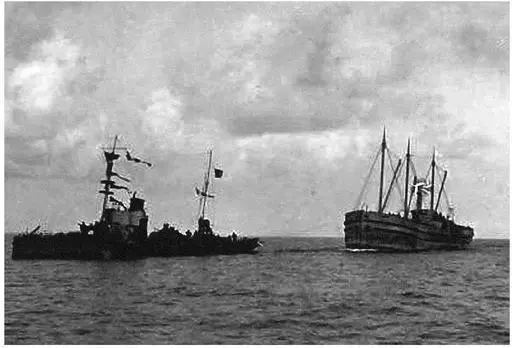
On 16 October the minesweeper A62 captured a Russian barge with 300 men aboard that was adrift in the mined area of the Irben Straits. A62 is shown here with her prize under tow.
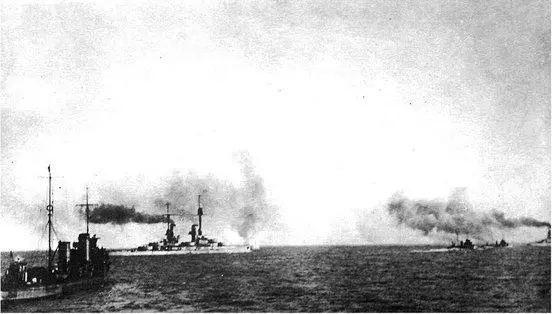
The battle in Moon Sound, 17 October. Russian shells fall near Kronprinz , whilst König is further ahead. At first the German battleships were unable to reply because the 12-inch guns of Slava outranged their own 30.5cm pieces.
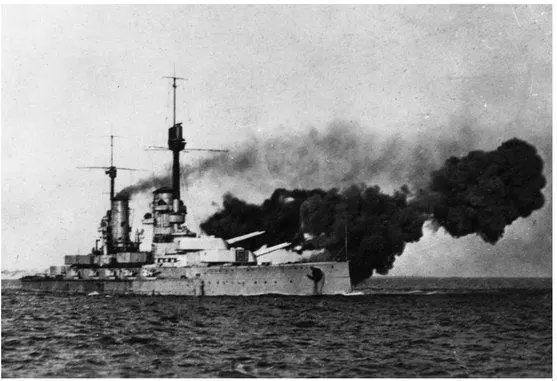
As the range closes, Kronprinz fires a salvo.

A German shell lands near Slava .
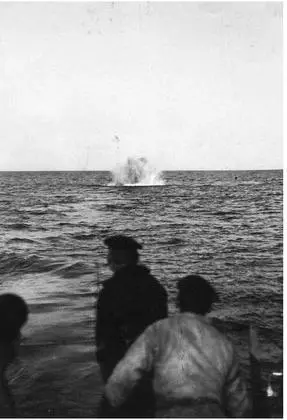
A Russian salvo falls near German minesweepers at work in the Moon Sound on 17 October. These vessels were handicapped by towing their sweeper gear.
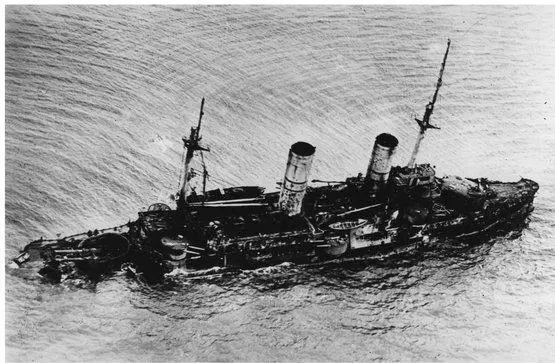
An aerial view of Slava , scuttled after being heavily damaged by multiple hits.
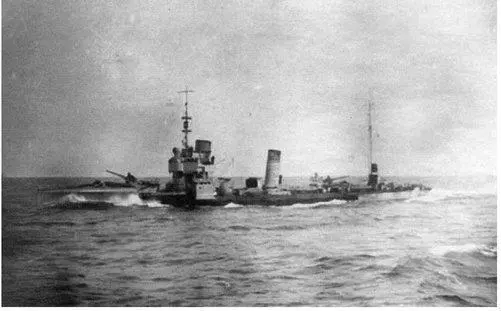
The German torpedoboat S64.
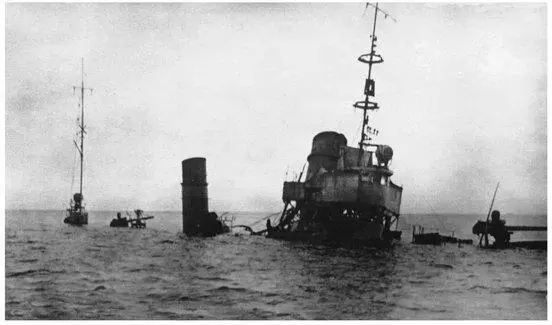
S64, scuttled after striking a mine near Kumora Reef on the night of 17 October.
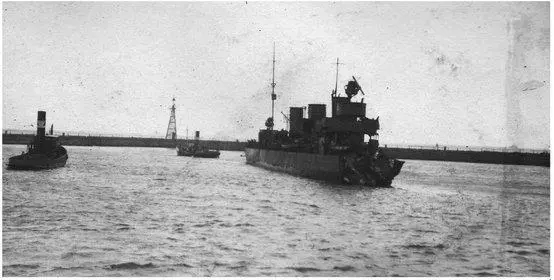
The German torpedoboat B111 is towed stern first into Libau after striking a mine on 18 October. Her bow was completely destroyed by the mine, yet she remained afloat.
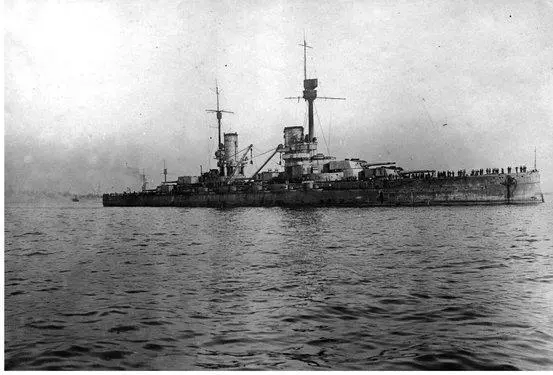
The battleship SMS Markgraf .
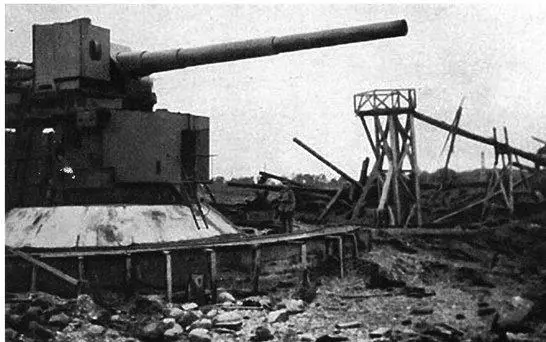
One of the abandoned 12-inch guns at Zerel.
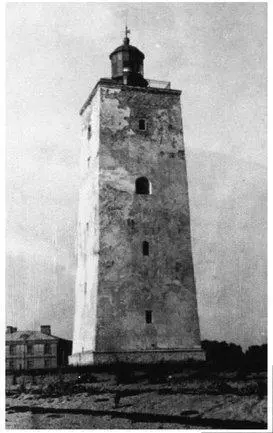
The famous lighthouse at Cape Zerel. The building to the left still stands today.
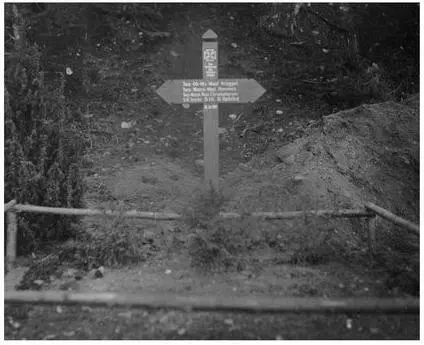
The grave of a sailor from the German torpedoboat B111, killed when she hit a mine on 18 October.
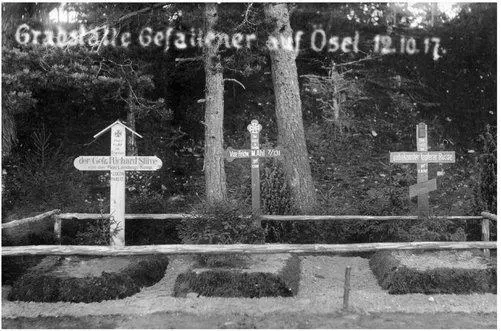
Buried together: a German soldier of the Pioneer Landing Corps, another from 7th Company, 131st Infantry Regiment, and an unknown Russian soldier.
Читать дальше
